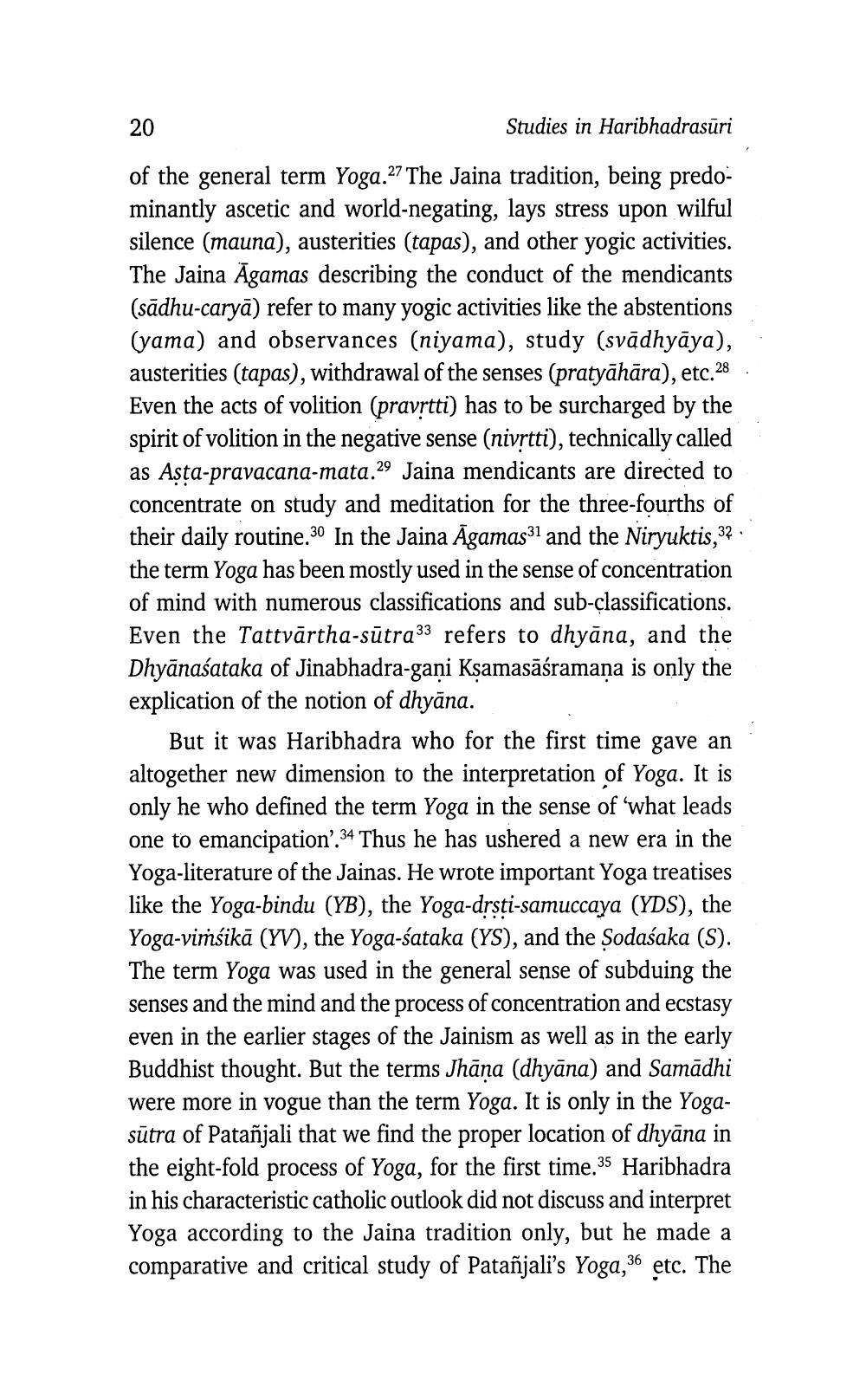________________
20
Studies in Haribhadrasūri
of the general term Yoga.27 The Jaina tradition, being predominantly ascetic and world-negating, lays stress upon wilful silence (mauna), austerities (tapas), and other yogic activities. The Jaina Āgamas describing the conduct of the mendicants (sādhu-caryā) refer to many yogic activities like the abstentions (yama) and observances (niyama), study (svādhyāya), austerities (tapas), withdrawal of the senses (pratyāhāra), etc.28. Even the acts of volition (pravrtti) has to be surcharged by the spirit of volition in the negative sense (nivrtti), technically called as Asta-pravacana-mata.29 Jaina mendicants are directed to concentrate on study and meditation for the three-fourths of their daily routine.30 In the Jaina Āgamas31 and the Niryuktis,32 · the term Yoga has been mostly used in the sense of concentration of mind with numerous classifications and sub-classifications. Even the Tattvārtha-sūtra33 refers to dhyāna, and the Dhyānaśataka of Jinabhadra-gani Kşamasāśramana is only the explication of the notion of dhyāna.
But it was Haribhadra who for the first time gave an altogether new dimension to the interpretation of Yoga. It is only he who defined the term Yoga in the sense of 'what leads one to emancipation'.34 Thus he has ushered a new era in the Yoga-literature of the Jainas. He wrote important Yoga treatises like the Yoga-bindu (YB), the Yoga-drsti-samuccaya (YDS), the Yoga-vimśikā (YV), the Yoga-śataka (YS), and the Sodaśaka (S). The term Yoga was used in the general sense of subduing the senses and the mind and the process of concentration and ecstasy even in the earlier stages of the Jainism as well as in the early Buddhist thought. But the terms Jhāņa (dhyāna) and Samadhi were more in vogue than the term Yoga. It is only in the Yogasūtra of Patañjali that we find the proper location of dhyāna in the eight-fold process of Yoga, for the first time. 35 Haribhadra in his characteristic catholic outlook did not discuss and interpret Yoga according to the Jaina tradition only, but he made a comparative and critical study of Patañjali's Yoga,36 etc. The




